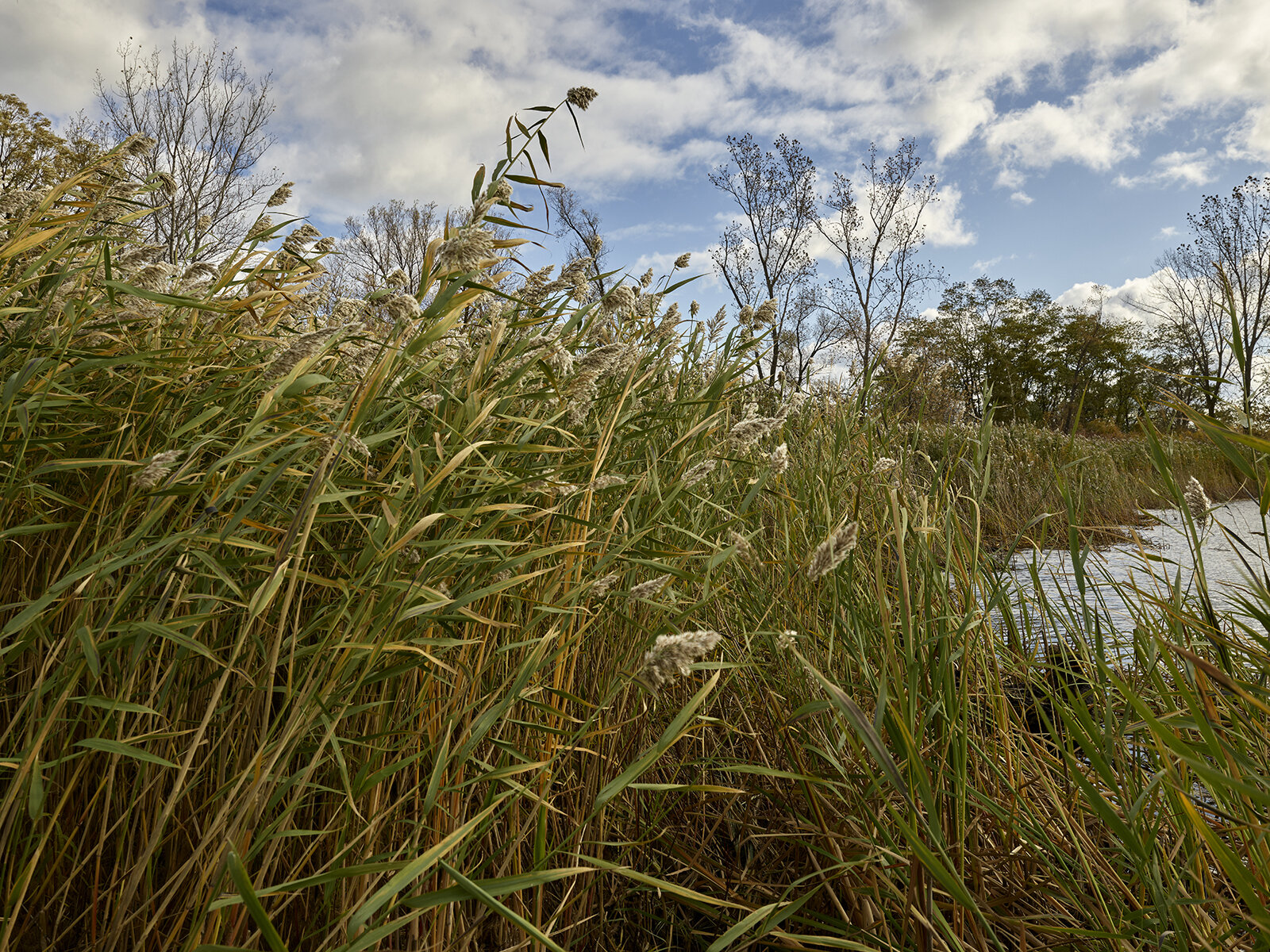WETLANDS
Wetlands are messy, smelly, infested with biting insects, and often inaccessible except by trekking in mud or entering by canoe/kayak. Once you are there, you feel you have entered something primordial. These are life giving landscapes, and no two are alike. Mudflats teem with microorganisms that support millions of birds migrating north and south. Dense foliage along coasts cushions the destructive force of violent storms, acting like a shock absorber to protect inland communities. Fresh water inland marshes are high in biodiversity and shelter rare plant species. They filter polluted water and serve as reservoirs that protects downstream communities from flooding when spring snow melts.
What is not appreciated about wetlands is their potential to offer nature-based solutions to climate change. They constitute an important storage reservoir for atmospheric carbon—on a par with forests. A recent study undertaken by The Nature Conservancy in the U.S. found that restoring coastal wetlands globally could absorb as much as 200 million tonnes of atmospheric CO2, the equivalent of removing 39.5 million cars from the road!
READ MORE/LESS
I fell in love with wetlands in 2010. That year on a business trip to Hong Kong I hiked the Mai Po Nature Reserve, home to an internationally significant mangrove forest located in Shenzhen Bay. Later that summer with friends I canoed Minesing Wetlands in Ontario, Canada for the first time, including a silver maple swamp that rivals southern U.S. swamps for beauty, only two hours north of Toronto. The intense colors, shapes and textures of decomposing matter; the pandemonium of gnarled branches and roots; mudflats teeming with birds feeding in frenzy; and landscapes that conjure where life on earth might have begun—these features of wetlands swept me away.
Unfortunately, coastal wetlands are vulnerable to sea level rise caused by climate change. Seas could rise three-to-five feet by 2100, inundating low-lying coastal salt marshes. Climate change also affects inland fresh water wetlands, creating a whiplash of alternating droughts and floods that cause swampy woodlands already under stress to die off. Many inland marshes are also under intense pressure from city and cottage developers.
Conserving and replanting tropical mangroves, especially, makes huge sense to combat climate change. Mangroves remove carbon from the atmosphere at double the rate of conventional forests. There isn’t a more robust carbon storage habitat, except perhaps the seabed or Arctic permafrost.
These imperiled marshlands are valuable to society and, what is more, beautiful to behold! Conserving and expanding them is an important strategy in the tool kit to combat climate change. Visit and donate to the organizations listed in the galleries below that are working to preserve these important natural assets.
A brief tour of the Marshscape exhibit at The Cardinal Gallery, Toronto, courtesy of Birds Canada.










